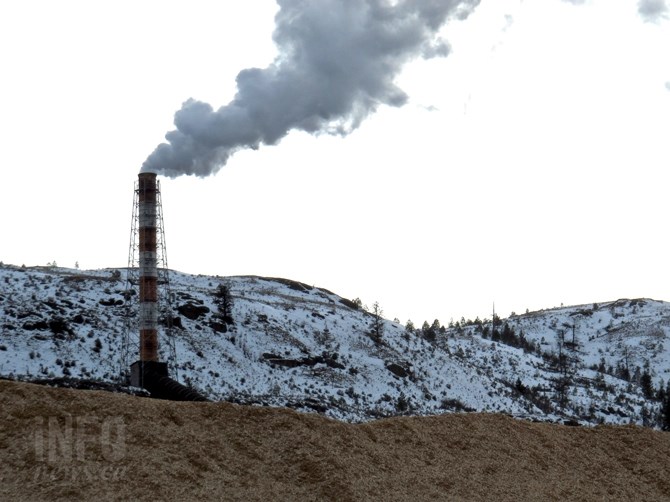
(FILE PHOTO / iNFOnews.ca)
February 21, 2017 - 1:26 PM
KAMLOOPS - The unmistakable smell of the pulp mill processing plant is often right on the nose for Kamloops residents and a recent power outage turned what's normally a faint odour into a jarring and unpleasant surprise for many last Saturday.
The Ministry of Environment says there's no need to worry, but a TRU professor argues the smell points to a bigger problem that holds serious health repercussions: The overall air quality in the river city.
Last Saturday, Feb. 18, the Domtar pulp mill vented emissions that would have normally been burned in processing into the air when an unplanned power outage shut the mill down for about two hours.
Put plainly, it stunk and people across Kamloops were affected, and upset by the smell, as evidenced by social media.
Bonny Skene, regional public affairs manager with Domtar, says the mill system has several backup levels including three generators and a connection to B.C. Hydro. Skene says the power fault caused all systems to trip and the smelly emissions were vented as a safety precaution to relieve the vessels that were under pressure. The incident is currently being investigated.
Ralph Adams, with the Ministry of Environment, says the concentration of total reduced sulphur, or the compound that gives pulp mills the distinct sulphur smell, reached 8.6 parts per billion in the ambient atmosphere during the outage.
Skene says WorkSafeBC has set an exposure limit of 10 parts per million for total reduced sulphur, therefore no workers were evacuated as a result of the outage.
According to Adams, total reduced sulphur is an odour compound and does not have detrimental health affects.
"They are very odorous, but even in the 100 parts per billion they are not a health concern," he says. "At the downtown station, the highest concentration measured was 8.6 parts per billion. On a normal day, the value is lower than one part per billion. During the episode, there were six hours that measured above six parts per billion."
Dr. Michael Mehta, professor of Geography and Environmental Studies at TRU argues that total reduced sulphur is a serious health concern worth monitoring.
"Truth is, air pollution is a silent killer and the government downplays risks. There's always a balancing act between being aggressive against pollution and going against industry," Mehta says.
Mehta says the smell that lingered in Kamloops last Saturday was more than just unpleasant, it was dangerous.
"Several studies that show that exposure to total reduced sulphur creates chronic and acute health problems. Short-term exposures have been linked to an increase in hospital admissions, while long-term, chronic exposure is connected to a range of adverse health outcomes," Mehta says.
According to Mehta, in addition to the total reduced sulphur, the Domtar outage caused an air pollutant, called fine particulate matter, to be released into the atmosphere. At high levels, fine particulate matter causes the air to appear hazy.
"Fine particulate matter is made of solid particles and liquids composed of hundreds of chemicals. The size range of these chemicals allows them to be inhaled easily, held longer in the lungs, circulate through the blood stream, and to lodge in the brain. Many of these are highly carcinogenic," Mehta says.
Mehta has spent his career teaching, researching and learning about health and environmental risk issues, air pollution included. He participates in an air quality monitoring system called PurpleAir.
PurpleAir is a network of Wi-Fi enabled particulate matter sensor devices that was started in November 2015 in the USA and have since spread across the world. PurpleAir started when a company was concerned with the increase of open pit mining and wanted to monitor the local air quality.
Mehta has helped deploy 15 devices in Kamloops and says the data that shows on the online PurpleAir map is accurate and real time.
Mehta argues there’s much work to be done when it comes to air pollution and transparency for citizens.
"We have a major blind spot to a big health risk we all face," he says.

This still image taken from a PurpleAir map on Feb. 21, 2017 shows the various device locations and the fine particulate matter ratings around Kamloops.
Image Credit: SUBMITTED/PurpleAir
To contact a reporter for this story, email Kim Anderson or email the editor. You can also submit photos, videos or news tips to the newsroom and be entered to win a monthly prize draw.
We welcome your comments and opinions on our stories but play nice. We won't censor or delete comments unless they contain off-topic statements or links, unnecessary vulgarity, false facts, spam or obviously fake profiles. If you have any concerns about what you see in comments, email the editor in the link above.
News from © iNFOnews, 2017